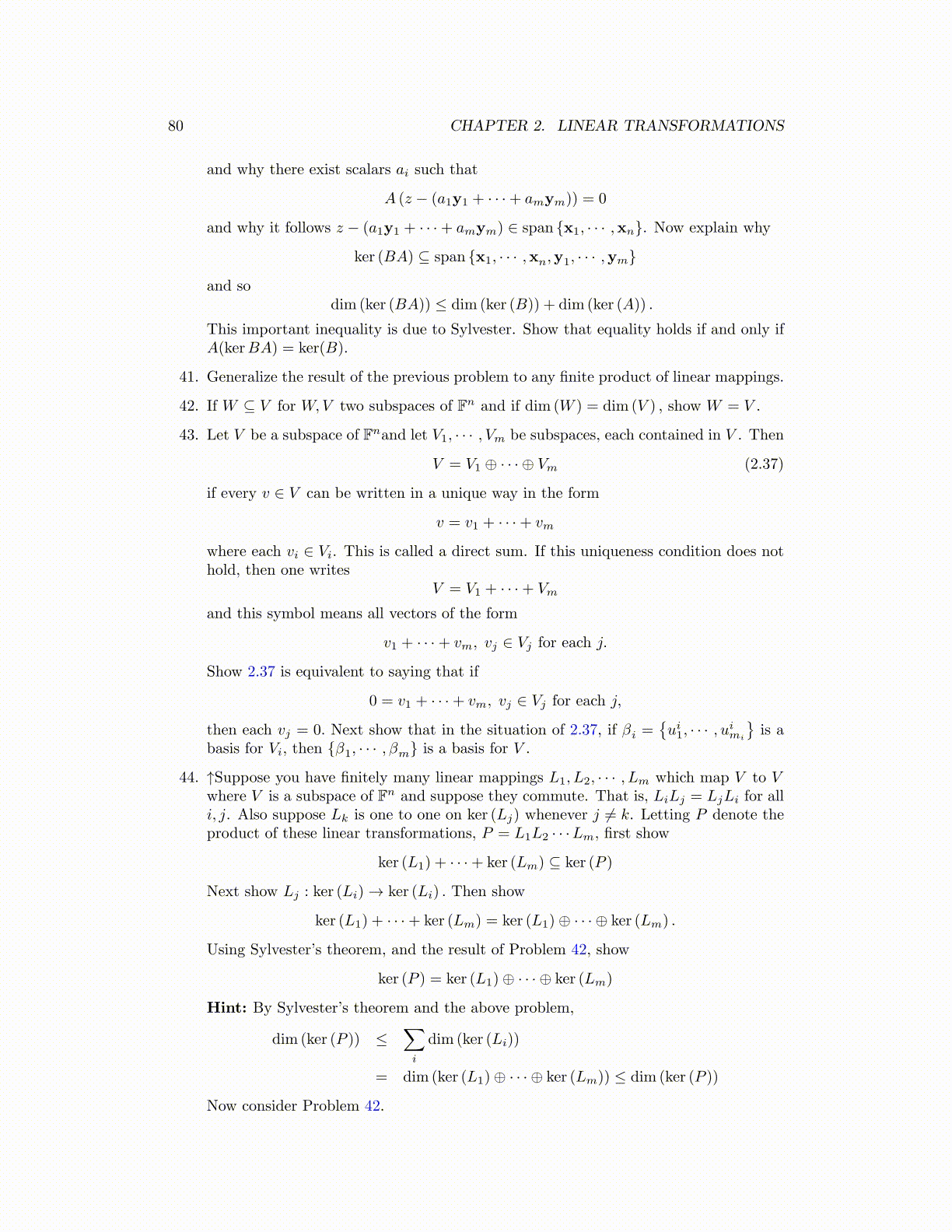
80 CHAPTER 2. LINEAR TRANSFORMATIONS
and why there exist scalars ai such that
A (z − (a1y1 + · · ·+ amym)) = 0
and why it follows z − (a1y1 + · · ·+ amym) ∈ span {x1, · · · ,xn}. Now explain why
ker (BA) ⊆ span {x1, · · · ,xn,y1, · · · ,ym}
and sodim (ker (BA)) ≤ dim (ker (B)) + dim (ker (A)) .
This important inequality is due to Sylvester. Show that equality holds if and only ifA(kerBA) = ker(B).
41. Generalize the result of the previous problem to any finite product of linear mappings.
42. If W ⊆ V for W,V two subspaces of Fn and if dim (W ) = dim (V ) , show W = V .
43. Let V be a subspace of Fnand let V1, · · · , Vm be subspaces, each contained in V . Then
V = V1 ⊕ · · · ⊕ Vm (2.37)
if every v ∈ V can be written in a unique way in the form
v = v1 + · · ·+ vm
where each vi ∈ Vi. This is called a direct sum. If this uniqueness condition does nothold, then one writes
V = V1 + · · ·+ Vm
and this symbol means all vectors of the form
v1 + · · ·+ vm, vj ∈ Vj for each j.
Show 2.37 is equivalent to saying that if
0 = v1 + · · ·+ vm, vj ∈ Vj for each j,
then each vj = 0. Next show that in the situation of 2.37, if βi ={ui1, · · · , uimi
}is a
basis for Vi, then {β1, · · · , βm} is a basis for V .
44. ↑Suppose you have finitely many linear mappings L1, L2, · · · , Lm which map V to Vwhere V is a subspace of Fn and suppose they commute. That is, LiLj = LjLi for alli, j. Also suppose Lk is one to one on ker (Lj) whenever j ̸= k. Letting P denote theproduct of these linear transformations, P = L1L2 · · ·Lm, first show
ker (L1) + · · ·+ ker (Lm) ⊆ ker (P )
Next show Lj : ker (Li) → ker (Li) . Then show
ker (L1) + · · ·+ ker (Lm) = ker (L1)⊕ · · · ⊕ ker (Lm) .
Using Sylvester’s theorem, and the result of Problem 42, show
ker (P ) = ker (L1)⊕ · · · ⊕ ker (Lm)
Hint: By Sylvester’s theorem and the above problem,
dim (ker (P )) ≤∑i
dim (ker (Li))
= dim (ker (L1)⊕ · · · ⊕ ker (Lm)) ≤ dim (ker (P ))
Now consider Problem 42.